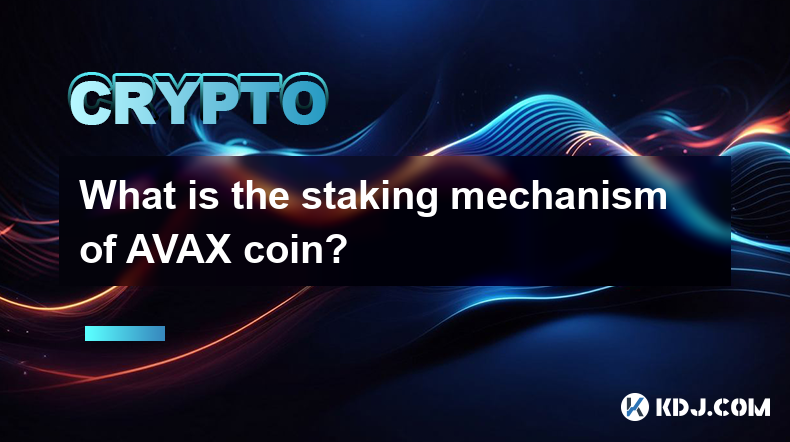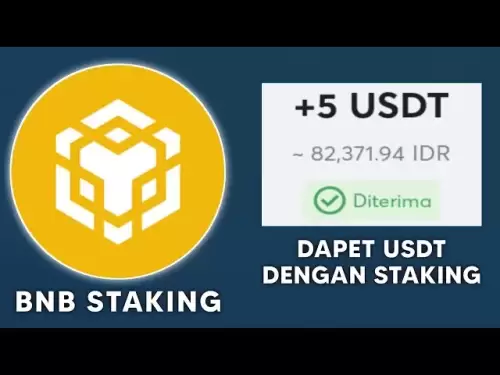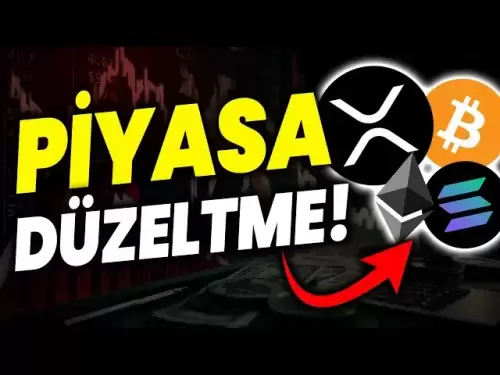-
 Bitcoin
Bitcoin $101,898.5005
-0.75% -
 Ethereum
Ethereum $2,258.1125
-1.07% -
 Tether USDt
Tether USDt $1.0004
0.01% -
 XRP
XRP $2.0178
-2.93% -
 BNB
BNB $624.0243
-1.53% -
 Solana
Solana $134.3298
-0.90% -
 USDC
USDC $0.9999
0.01% -
 TRON
TRON $0.2675
-2.05% -
 Dogecoin
Dogecoin $0.1538
-1.96% -
 Cardano
Cardano $0.5482
-1.11% -
 Hyperliquid
Hyperliquid $35.5636
5.45% -
 Bitcoin Cash
Bitcoin Cash $453.4902
-1.66% -
 Sui
Sui $2.5134
-2.97% -
 UNUS SED LEO
UNUS SED LEO $9.1292
1.77% -
 Chainlink
Chainlink $11.8457
-1.60% -
 Stellar
Stellar $0.2312
-2.73% -
 Avalanche
Avalanche $16.9721
0.29% -
 Toncoin
Toncoin $2.7549
-3.82% -
 Shiba Inu
Shiba Inu $0.0...01081
-1.10% -
 Litecoin
Litecoin $80.8250
-0.71% -
 Hedera
Hedera $0.1374
0.21% -
 Monero
Monero $305.4827
-2.36% -
 Ethena USDe
Ethena USDe $1.0006
0.00% -
 Dai
Dai $1.0000
-0.01% -
 Polkadot
Polkadot $3.2085
-3.12% -
 Bitget Token
Bitget Token $4.0845
-3.13% -
 Uniswap
Uniswap $6.3353
-1.63% -
 Pi
Pi $0.5085
-0.70% -
 Pepe
Pepe $0.0...08913
-3.82% -
 Aave
Aave $232.7090
-0.58%
What is the staking mechanism of AVAX coin?
Avalanche's staking uses its unique Avalanche Consensus, letting users stake AVAX to secure the network and earn rewards. Methods range from running a validator node (high rewards, high technical skill) to delegating to one (passive income, lower risk). Understand slashing penalties before participating.
Mar 22, 2025 at 08:36 pm

Key Points:
- Avalanche's staking mechanism utilizes a novel consensus protocol called Avalanche Consensus, differing significantly from Proof-of-Work or traditional Proof-of-Stake.
- Staking AVAX secures the network and allows participants to earn rewards. The rewards are distributed proportionally based on the amount staked.
- There are various ways to stake AVAX, offering flexibility depending on technical expertise and risk tolerance.
- Validators play a crucial role in maintaining network security and processing transactions, earning the highest rewards.
- Delegation allows users without significant technical skills to participate in staking and earn rewards passively.
- Understanding the risks associated with staking, including potential slashing penalties, is crucial before participation.
What is the staking mechanism of AVAX coin?
Avalanche's staking mechanism is a core component of its innovative blockchain architecture. Unlike many other cryptocurrencies that rely on Proof-of-Work (PoW) or simpler Proof-of-Stake (PoS) models, Avalanche employs its own unique consensus protocol known as Avalanche Consensus. This protocol allows for incredibly fast transaction finality and high throughput while maintaining a secure and decentralized network. The process of staking AVAX involves locking up your coins to help secure the network and, in return, receiving rewards.
How does Avalanche Consensus work in relation to staking?
Avalanche Consensus relies on a network of validators who participate in a process of sampling and validating subnets. These validators are essentially the backbone of the network's security. They are selected proportionally to the amount of AVAX they stake. When a new transaction needs to be confirmed, a random sample of validators is chosen to validate it. This process is incredibly efficient and ensures high transaction speeds. The more AVAX a validator stakes, the higher their chance of being selected for validation, leading to higher potential rewards.
What are the different ways to stake AVAX?
There are several ways to participate in Avalanche's staking mechanism, catering to different levels of technical expertise and risk tolerance:
- Becoming a Validator: This involves running a full node and actively participating in the consensus process. It offers the highest potential rewards but requires significant technical knowledge and uptime. You are responsible for the maintenance and security of your node.
- Delegating to a Validator: This allows users to participate in staking without the technical overhead of running a node. You delegate your AVAX to a validator, earning rewards proportionally to your stake. This is a simpler and more passive approach to staking.
- Using a Staking Pool or Exchange: Many exchanges and staking pools offer simplified staking services. They handle the technical aspects of staking, allowing users to easily participate and earn rewards. However, it’s important to research the reputation and security measures of any third-party service.
What are the rewards for staking AVAX?
The rewards for staking AVAX vary depending on several factors, including network congestion, the total amount of staked AVAX, and the chosen staking method. Validators generally receive the highest rewards for their active participation in securing the network. Delegators receive a portion of the rewards earned by the validator they've chosen. The exact reward percentages fluctuate and are not fixed. Always check the current rates from official Avalanche sources.
What are the risks involved in staking AVAX?
While staking can be profitable, it's crucial to understand the associated risks:
- Slashing Penalties: Validators can face penalties for misbehavior, such as downtime or providing incorrect information. These penalties can result in the loss of some or all of your staked AVAX.
- Impermanent Loss (for liquidity staking): If you're staking in a liquidity pool, you may experience impermanent loss if the price of AVAX changes significantly relative to the other asset in the pool.
- Security Risks (Third-party services): Using third-party services for staking introduces additional security risks. Choose reputable and well-established providers to mitigate these risks.
- Market Volatility: The value of AVAX can fluctuate, impacting the overall profitability of your staking activities.
Frequently Asked Questions:
Q: How much AVAX do I need to stake?
A: There's no minimum amount to delegate AVAX. However, to become a validator, you'll need a substantial amount of AVAX to ensure your node has a high chance of being selected for validation. The exact amount varies depending on network conditions.
Q: How long does it take to unstake AVAX?
A: The unstaking period varies depending on the chosen method. It can range from a few days to several weeks. Always check the specific unstaking period before participating.
Q: Is staking AVAX taxable?
A: Yes, the rewards earned from staking AVAX are generally considered taxable income in most jurisdictions. Consult a tax professional for specific guidance.
Q: What are the differences between delegating and validating?
A: Delegating is passive; you don't need technical expertise or maintain a node. Validating is active; you need technical expertise and run a node to secure the network and receive higher rewards but also risk slashing penalties.
Q: Where can I stake my AVAX?
A: You can stake your AVAX through various platforms, including the official Avalanche website, exchanges that support staking, and dedicated staking pools. Always research the platform's security and reputation before staking.
Disclaimer:info@kdj.com
The information provided is not trading advice. kdj.com does not assume any responsibility for any investments made based on the information provided in this article. Cryptocurrencies are highly volatile and it is highly recommended that you invest with caution after thorough research!
If you believe that the content used on this website infringes your copyright, please contact us immediately (info@kdj.com) and we will delete it promptly.
- Crypto Penny Coins: Hunting for Monster Gains in 2025
- 2025-06-24 02:45:12
- Ethereum Whale Dips Into Crashing ETH: Smart Move?
- 2025-06-24 02:25:12
- Shiba Inu vs. Rival Tokens: Navigating the Cryptocurrency Craze in NYC
- 2025-06-24 03:10:22
- Stablecoin Scramble: Market Structure and Bill Passage in the Crypto Wild West
- 2025-06-24 02:45:12
- Circle Stock Soars: Surpassing USDC Market Cap After GENIUS Act Boost
- 2025-06-24 03:10:22
- Pepe Coin's Open Interest Hints at Potential Rally: A Trader's Guide
- 2025-06-24 02:50:12
Related knowledge

How to customize USDT TRC20 mining fees? Flexible adjustment tutorial
Jun 13,2025 at 01:42am
Understanding USDT TRC20 Mining FeesMining fees on the TRON (TRC20) network are essential for processing transactions. Unlike Bitcoin or Ethereum, where miners directly validate transactions, TRON uses a delegated proof-of-stake (DPoS) mechanism. However, users still need to pay bandwidth and energy fees, which are collectively referred to as 'mining fe...

USDT TRC20 transaction is stuck? Solution summary
Jun 14,2025 at 11:15pm
Understanding USDT TRC20 TransactionsWhen users mention that a USDT TRC20 transaction is stuck, they typically refer to a situation where the transfer of Tether (USDT) on the TRON blockchain has not been confirmed for an extended period. This issue may arise due to various reasons such as network congestion, insufficient transaction fees, or wallet-rela...

How to cancel USDT TRC20 unconfirmed transactions? Operation guide
Jun 13,2025 at 11:01pm
Understanding USDT TRC20 Unconfirmed TransactionsWhen dealing with USDT TRC20 transactions, it’s crucial to understand what an unconfirmed transaction means. An unconfirmed transaction is one that has been broadcasted to the blockchain network but hasn’t yet been included in a block. This typically occurs due to low transaction fees or network congestio...

How to check USDT TRC20 balance? Introduction to multiple query methods
Jun 21,2025 at 02:42am
Understanding USDT TRC20 and Its ImportanceUSDT (Tether) is one of the most widely used stablecoins in the cryptocurrency market. It exists on multiple blockchain networks, including TRC20, which operates on the Tron (TRX) network. Checking your USDT TRC20 balance accurately is crucial for users who hold or transact with this asset. Whether you're sendi...

What to do if USDT TRC20 transfers are congested? Speed up trading skills
Jun 13,2025 at 09:56am
Understanding USDT TRC20 Transfer CongestionWhen transferring USDT TRC20, users may occasionally experience delays or congestion. This typically occurs due to network overload on the TRON blockchain, which hosts the TRC20 version of Tether. Unlike the ERC20 variant (which runs on Ethereum), TRC20 transactions are generally faster and cheaper, but during...

The relationship between USDT TRC20 and TRON chain: technical background analysis
Jun 12,2025 at 01:28pm
What is USDT TRC20?USDT TRC20 refers to the Tether (USDT) token issued on the TRON blockchain using the TRC-20 standard. Unlike the more commonly known ERC-20 version of USDT (which runs on Ethereum), the TRC-20 variant leverages the TRON network's infrastructure for faster and cheaper transactions. The emergence of this version came as part of Tether’s...

How to customize USDT TRC20 mining fees? Flexible adjustment tutorial
Jun 13,2025 at 01:42am
Understanding USDT TRC20 Mining FeesMining fees on the TRON (TRC20) network are essential for processing transactions. Unlike Bitcoin or Ethereum, where miners directly validate transactions, TRON uses a delegated proof-of-stake (DPoS) mechanism. However, users still need to pay bandwidth and energy fees, which are collectively referred to as 'mining fe...

USDT TRC20 transaction is stuck? Solution summary
Jun 14,2025 at 11:15pm
Understanding USDT TRC20 TransactionsWhen users mention that a USDT TRC20 transaction is stuck, they typically refer to a situation where the transfer of Tether (USDT) on the TRON blockchain has not been confirmed for an extended period. This issue may arise due to various reasons such as network congestion, insufficient transaction fees, or wallet-rela...

How to cancel USDT TRC20 unconfirmed transactions? Operation guide
Jun 13,2025 at 11:01pm
Understanding USDT TRC20 Unconfirmed TransactionsWhen dealing with USDT TRC20 transactions, it’s crucial to understand what an unconfirmed transaction means. An unconfirmed transaction is one that has been broadcasted to the blockchain network but hasn’t yet been included in a block. This typically occurs due to low transaction fees or network congestio...

How to check USDT TRC20 balance? Introduction to multiple query methods
Jun 21,2025 at 02:42am
Understanding USDT TRC20 and Its ImportanceUSDT (Tether) is one of the most widely used stablecoins in the cryptocurrency market. It exists on multiple blockchain networks, including TRC20, which operates on the Tron (TRX) network. Checking your USDT TRC20 balance accurately is crucial for users who hold or transact with this asset. Whether you're sendi...

What to do if USDT TRC20 transfers are congested? Speed up trading skills
Jun 13,2025 at 09:56am
Understanding USDT TRC20 Transfer CongestionWhen transferring USDT TRC20, users may occasionally experience delays or congestion. This typically occurs due to network overload on the TRON blockchain, which hosts the TRC20 version of Tether. Unlike the ERC20 variant (which runs on Ethereum), TRC20 transactions are generally faster and cheaper, but during...

The relationship between USDT TRC20 and TRON chain: technical background analysis
Jun 12,2025 at 01:28pm
What is USDT TRC20?USDT TRC20 refers to the Tether (USDT) token issued on the TRON blockchain using the TRC-20 standard. Unlike the more commonly known ERC-20 version of USDT (which runs on Ethereum), the TRC-20 variant leverages the TRON network's infrastructure for faster and cheaper transactions. The emergence of this version came as part of Tether’s...
See all articles
























































































